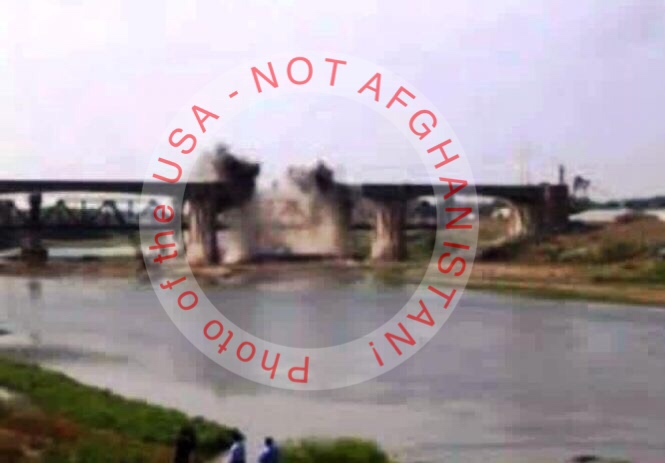[no railways in this post!]
This is not a picture of the Alchin Bridge near Kunduz in Afghanistan being attacked by the Taliban. It is a picture of the controlled demolition of a bridge in Kansas in the USA in 2006.
Various news reports say a road bridge in Afghanistan’s Kunduz province was attacked by the Taliban (or possibly a US air strike) on 21 August 2016.
#Afghanistan: Insurgents blow up Afghan-Tajik transit bridge in Kunduz https://t.co/GSWpz6rqsx
— Pajhwok Afghan News (@pajhwok) August 21, 2016
Most of the news reports are illustrated with a picture or video of an explosion destroying a bridge. While not all reports explicitly claim that the photo shows the attack in question, some do make this claim. Claims that the picture is of the attack are also being made on social media.
However, a Google reverse image search find that the picture is actually a screenshot from around 1 min 15 sec into a video of the demolition of a section of the Topeka Boulevard bridge over the Kansas River on 9 August 2006, to make way for a replacement bridge; note the truss bridge in the background, and the people at the lower centre of the image.
Here is another view of the Kansas bridge demolition:
Some of the Afghan news reports give the impression that the bridge which has been attacked is the bridge opened in 2007 across the river which forms the border between Shir Khan Badar in Afghanistan and Nizhny Pyanj in Tajikistan:
The Afghanistan – Tajikistan Bridge at Shir Khan Bandar.
However, other reports specify that the bridge which was attacked was in fact the Alchin Bridge, or Pul e Alchin. According to Google Maps, Alchin is near the city of Kunduz, and has a bridge which is on the road north from Kunduz to Shir Khan Bandar and Tajikistan. This is not the bridge at the border, but it is on the route to the border, and it becomes possible to see how confusion has arisen.

I have not managed to find a verifiable photo of the Alchin Bridge.

